
All categories
Featured selections
Trade Assurance
Buyer Central
Help Center
Get the app
Become a supplier

(604 products available)

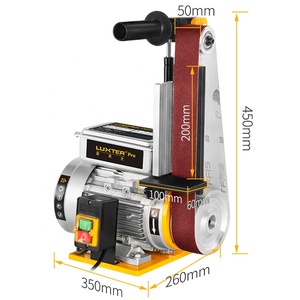


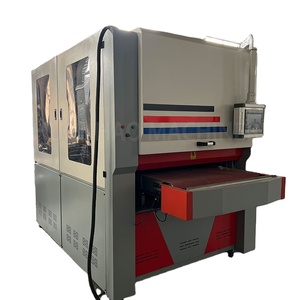

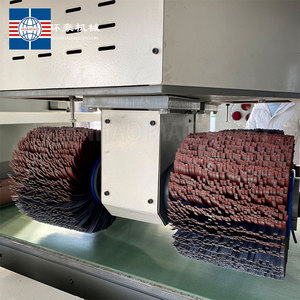
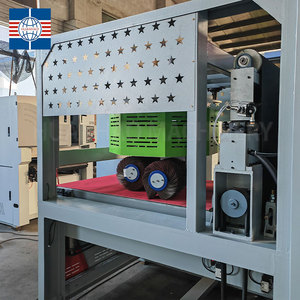

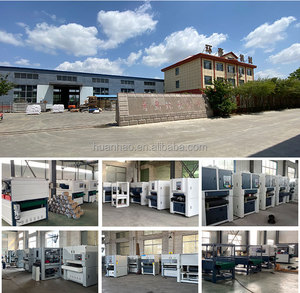

















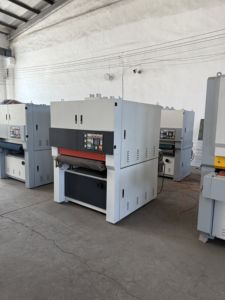
















A bench belt-disc sander is a combination sanding tool that incorporates both a sanding belt and a sanding disc in one unit, offering versatility for various sanding tasks. Business owners, especially those in the woodworking, metalworking, and DIY tool retail sectors, can benefit from offering such multifunctional sanders.
Belt Sanders
The sanding belt is ideal for leveling and shaping, especially on flat or irregular surfaces. Functional when high material removal rates are needed. This sanding component can quickly remove large amounts of material from wood, metal, or plastic, making it suitable for shaping and refining tasks. It is often used for contoured work in woodworking and sculpting metal parts to a specific shape. This is because the long, narrow belt allows access to tight spaces and intricate profiles.
Disc Sanders
The sanding disc is appropriate for finishing and smoothing surfaces. This is because the disc provides a flat sanding surface for achieving a smooth finish on flat workpieces. It helps in removing scratches and tool marks left on the surface, hence enhancing the surface quality. With its design, the disc can be used effectively on edges or for mitre cuts, making it valuable for detail work and edge finishing.
Combination Sanders
A combination belt and disc sander features both sanding elements, allowing for quick and easy changes between belt and disc sanding depending on the task. This versatility makes it suitable for diverse applications, as one tool can handle both surface sanding and edge or profile sanding. By integrating different sanding methods, this tool can efficiently complete multi-step sanding processes without the need to switch between different machines.
Several factors come into play when choosing the right belt and disc sanders for benches as a business owner. The chosen sanders should fulfill the clients' needs and industry standards.
Grit Size
Grit sizes on sanding belts and discs determine how coarse or fine the surface will be after sanding. Coarser grits, such as 60 or 80, are used for material removal and shaping, especially when the surface is uneven or needs significant material taken off. The medium grits, like 120 or 150, are used for general sanding to smooth surfaces while still removing some material; this is typically after initial shaping with coarser grits. Fine grits, from 180 upwards, are meant for finishing work, which will give a very smooth surface ready for painting, staining, or other finishing processes. It leaves a polished-like surface and minimizes scratches significantly.
Speed
Bench sanders come with various speed settings, which affect their sanding performance and versatility. Variable-speed options are preferred as they allow adjusting the speed to suit different sanding needs, be it coarse material removal or fine finishing. The power of the motor behind the sander also influences the speed and how well it can maintain consistent speeds even under load, which is critical for effective and even sanding. The belt and disc speeds, expressed in revolutions per minute (RPM), are a good indicator of the tool's sanding capability — higher speeds mean faster sanding, but that is suitable only for specific tasks.
Size of Belt/Disc
This is primarily related to the size of the sanding belts and discs — larger sizes are preferred for heavier tasks because they provide a larger surface area, which means will do task much quicker. Larger sizes also tend to run cooler and are more durable in the long run. Medium or small sizes are suitable for contouring and more detailed work as they cater to intricate edges or profiles. Common sizes include sanding belts of 1 inch by 42 inches and sanding discs of 6 inches and 4 inches. This will depend on the demands of the users, in addition to the tasks they perform most often.
Material
Sanding belts and discs are manufactured by using various materials, and each material suits specific tasks or projects. Aluminum oxide is the most common of these materials for belts and discs due to its versatility and durability for general sanding. Silicon carbide is often used for its sharp, hard crystals that make it suitable for sanding hard materials like glass, marble, or metal, despite its brittleness. Ceramic abrasives are for heavy-duty sanding tasks due to their self-sharpening properties, making them long-lasting for intensive material removal. Also, each sanding belt and disc set is designed to handle distinct surface materials such as wood, metal, or plastic.
A bench belt sander and a bench disc sander combined are useful in many industries. Below are some of these uses.
Woodworking and Carpentry
Sanding creates smooth surfaces that prepare the wood for stains, paint, or other finishes, thereby enhancing the aesthetic appeal of the final product. Sanders are also used to shape wood pieces by removing material from the surface to create desired profiles, edges, or contours. Sanding helps eliminate surface imperfections such as dents, scratches, or unevenness; this is very crucial for quality control in woodworking, as imperfections can affect the structural integrity or appearance of the final product.
Metalworking
In metal fabrication, sanding is critical to remove sharp edges or burrs from cut or stamped metal pieces, which is essential for safety during handling or assembly. Moreover, sanding prepares metal surfaces for processes such as welding, coating, or painting by providing a better surface for these materials to adhere, which enhances the quality and strength of the joints or finish. Surface rust, oxidation, or contaminants can be removed through sanding, thus prolonging the life of the metal and improving its appearance.
Automotive and Aerospace
Sanding ensures that bodywork is as smooth as possible before applying paint, which is critical for achieving a flawless finish that enhances the vehicle's aesthetic appeal. In terms safety and functionality, sanding is crucial for removing sharp edges from repairs or custom parts, which minimizes risks during handling or installation. Sanding also prepares surface for Primers, Paints, and Coatings: by providing a keyed surface for primers, paints, and protective coatings to adhere effectively, thus improving their performance and longevity.
Industrial Manufacturing
In the production of plastics, composites, and other manufactured goods, sanding is used to remove surface defects like flash, mold lines, or operator mistakes, which is critical in maintaining quality. To achieve specific tolerances in manufactured parts, material is occasionally removed through sanding, which affects their fit and function. When creating products with intricate designs, sanding ensures that the surfaces are smooth and all detailed features are well defined, this is particularly important in aesthetic and functional applications.
Construction and Cabinetmaking
In construction and cabinetmaking, sanding prepares wood surfaces for finishing by making them smooth, eliminating imperfections, and readying the surface for stains or paints, which improves the wood's natural looks. Sanding helps in the alignment and fitting of joints by removing excess material around the edges; this makes the joints fit better and look good. Sanders can be used for surface-sanding dry-erase boards to remove old surfaces and make it functional, hence improving its performance as a writing surface or visual aid.
As one of the most widely used stationary power tools, the bench sanders need proper maintenance to increase their shelf life and performance. Here are some maintenance and repair tips for the sanders.
Regular Inspection
This involves checking for wear and tear first without operating the machine. This can be done by simply inspecting the sanding belt and disc for visible signs of wear, such as cracks, tears, or uneven surfaces. Listening for strange noises and vibrations as the machine is operated and feeling for anomalies during use is also a great way of checking for possible issues.
Lubrication
It is ascertaining the correct parts of the tool and using the recommended lubricants. It is important to put on only the correct lubricants on the moving parts as per the manufacturer's specifications in order to prevent damage or malfunction. For low maintenance machines, the oiling time comes after many uses; the owner can oil it at the same time as changing the sanding belt/disc.
Cleaning
Clean all the components, both small and large, using the required cleaning tools and techniques. Vacuums should be used to remove dust and debris from the sanders as sanding debris can accumulate on both the belt and in the machine, which can affect performance. A damp cloth or specific cleaning materials should be used to clean the sanding belt/disc; an uncleaned sanding belt/disc can cause poor sanding results. A brush should be used to clean the pulleys, rollers, and other components as debris can cause them to wear out easily.
Sanding Belt/Disc Replacement
Wear sanding belts/discs should be replaced immediately to avoid losses and poor-quality work. The replacement should ensure that all new sanding belts/discs are installed correctly, with proper tension on the belts and straight alignment on the disc; this will ensure optimal performance. When doing the replacement, monitor the pulleys and rollers for signs of wear and tear because if not replaced, they will continue wearing out the new belt/disc and poor-quality work will ensue.
Calibration
Calibration ensures the machine operates at the correct level of efficiency. An unchanged sander can be calibrated by measuring the sanding belt speed and the disc rotation with a tachometer; if out of range, the motor needs adjusting. Users should make sure that the sander is level and square to make sure that they are sanding properly flat surfaces; this will also create clean and functional flat surfaces. Calibration is all about ensuring that the machine operates at peak efficiency; hence, no further maintenance will be needed, and repairs will be in good time.
Combination sanders are important in business working environments because they save space and time with flexible sanding tasks, improving efficiency when finer and faster sanding is in order. Having both belt and disc features enables industries to handle diverse projects, increasing workflow capabilities. The convenience associated with the quick switch between sanding modes leads to fewer interruptions during tasks, optimizing productivity.
Yes, they are quite worth it regarding how much space and money they save. Having both kinds of sanding in one place, they save the cost and inconvenience of separate machines by performing two tasks at once. It is worth the investment for small workshops and large industries because of their versatility due to their various uses in woodworking, metalworking, and other DIY projects.
Businesses in woodworking hire the services of office combination sanders to achieve smooth finishes on furniture and cabinetry. The manufacturing sector employs them for preparing parts for painting and assembly by getting rid of burrs and scratches. Automotive body shops use them for surface preparation to ensure better paint adhesion. The formation of detailed models in the aerospace and defense industries also uses combination sanders.
A user has to fix the workpiece to the bench sander table to prepare for use. It is effective to use light pressure to promote a longer sander life; heavy pressure will cause wear and tear. The sander has to be allowed to achieve full speed before bringing the workpiece to the sanding surface to avoid kickback. After completing work, the tool has to be unplugged to avoid accidents.
The lifespan of the combination sander can be increased by cleaning the belt and the disc of the sander after every use to get rid of debris that may cause clogging. Regular inspection of the sanding belt and sanding disc for signs of wear and tear is essential to replace them in good time. Proper lubrication and use of the manufacturer's guidelines go a long way in increasing the lifespan of the machine.